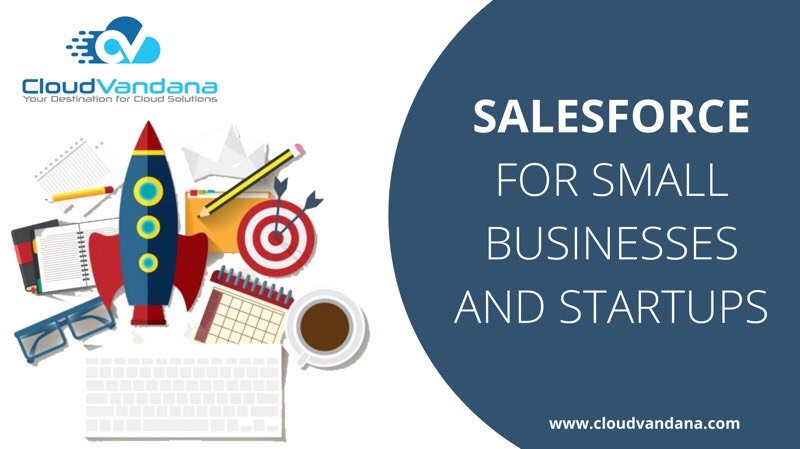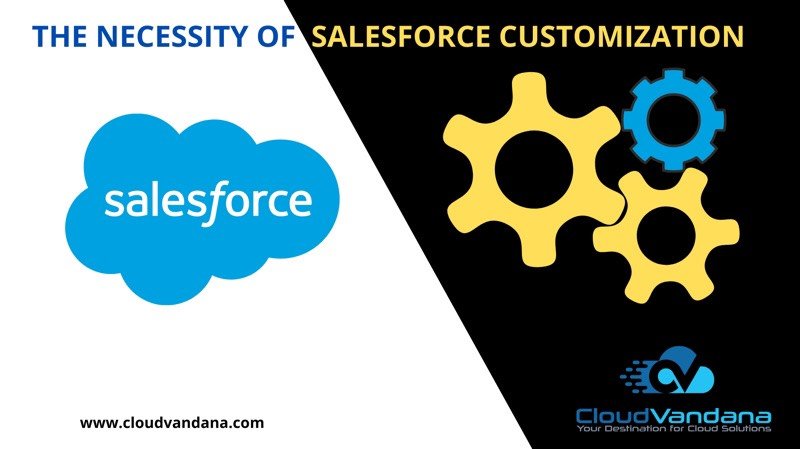ENHANCE YOUR MARKETING EFFORTS WITH GOOGLE TRENDS

Google Trends is a platform offered by Google that analyzes the popularity of top search queries in Google Search across various regions and languages. Marketers need to track the trending ideas continuously for the enhancement of marketing efforts. So Google Trends gives constant support to the marketers to figure out the popular trending topics over the internet. This tool identifies the current and existing trends in search marketing. Marketers can choose any topic relevant to their niche and put them in the marketing strategies. In this article, CloudVandana will help the marketers to understand the functionality of Google Trends and the way it can boost the marketing efforts. Google Trends Google Trends is an important tool offered by Google that helps marketers to identify trending topics across various industries. It actually helps both marketers and journalists. Google trends show the trending topics and marketers can draw the attention of the visitors using those topics. It is always a good idea to use these topics for the creation of content. Though there are millions of content ideas for a marketer to choose from, Google Trends tells the visitors about the most popular trending topic in a specific way. Marketers can insert any topic to know if the topic is trending or not in the search bar. Google Trends For Marketing Even if a person is not involved in the content creation, can use Google Trends regularly. People want to read the topics that interest them. So marketers, bloggers, or SEO, should be found such topics that will create interest among the visitors. Most marketers become so focused that they sometimes forget about the topics that interest them. The tool tells the marketers the popularity of a specific search phrase, so it becomes easier for them to decide if the topic is worth creating content or not. Marketers should keep in mind that all the trending topics might not be relevant to their industry. So they should choose phrases that are only related to their niche. Google Trends assist in the visual content as well that has many SEO-related benefits. If marketers are searching for image ideas that can boost the social media campaign or enhance the blog post, Google Trends can help the marketers to make the decision. The following four points will describe the uses of Google Trends in marketing. 1. Helps In Improving SEO Google Trends helps in organic search and keyword research. The tool also provides years’ worth of data to help marketers identify evergreen topics. So they can put their time and effort into those topics. If a keyword is popular for the last 5-6 years, then marketers or content creators can use those topics in a new way to boost their SEO. 2. Helps In Content Creation Google Trends provides new and interesting topics to write about. It is very challenging for marketers to choose the topics for content creation that will attract audiences and will rank higher in search engines like Google. As the marketers get to know the trending topics, they can create exciting content for better website traffic. 3. Ideas For Webinars Marketers need to reach out to the right people at the right time through webinars. Google Trends help them to do that. Marketers need market research before planning for a webinar. If an organization is planning to host a free webinar, they will definitely plan to use the currently trending topics in social media campaigns and PPC (pay-per-click) campaign to get the people’s attention on the webinar. They also need to know the keyword search that customers are using for their queries. Google Trends assist them in aspect for a successful webinar and other campaigns. 4. Helps To Find Long Tail Keywords For Paid Campaigns The marketers can start capitalizing on paid ads only after finding the right keywords. So finding the right keywords for the paid campaign is very important. Long-tail keywords help a lot for any campaign. Google Trends helps to find the trending keywords. So if the marketers add a long tail to that keyword, they can target a large number of audiences to serve their offerings. For example, peach is a trending fruit for winter. Google Trends can assist us by proving the keyword. Now, a fruit-selling business owner can add “organic peach for weight balance” or, “ organic peach for better eyesight”, to attract more web traffic and can move towards the conversion. So Google Trends assures the marketers so that they do not need to take any chances for their marketing. Do you have any additional queries or suggestions? Please post your valuable comments in the comment section or get in touch with CloudVandana for Salesforce resources. Request a Free Consultation YOU MIGHT ALSO LIKE
AN OVERVIEW OF SALESFORCE MAPS

Salesforce Maps empower your workforce on every journey, at every location, with add-ons for complex routes, and live updates from the field. Mapping out sales territories requires coordinating various moving parts. Sales managers need to manage the basic sales assignment process of connecting sales representatives with their regions. Salesforce maps help them to manage all these scenarios. Maps was formerly known as MapAnything. It has proven to be a very popular choice for sales organizations. But there were a few limitations to the previous functionality. So Maps was introduced to meet all the requirements. Sales executives must implement a full-scale, robust mapping solution to best optimize a sales territory campaign. Salesforce Maps Maps is a location intelligence and map visualization tool that integrates with the Salesforce CRM, simplifying territory management. With Maps, Sales executives can create territories for the sales representatives and easily see the outcomes. Maps ensure that the representatives are getting the most coverage. Maps help organizations to add geographical context to the selling process. The system also automates standard selling situations, like contact details, new account creation, lead gathering, and various customer service components. Maps use functional mapping and productivity optics. So before investing in Salesforce Maps, Sales Executives need to consider the Maps features first. Maps Features Some of the Maps features include- Picture Courtesy: Salesforce Pricing The sales executives should be aware of the pricing and the cost of add-on that may be required to get the full benefits that the team is looking for. For starters, those who have not implemented Salesforce’s CRM and Salesforce Sales Cloud, need to purchase and implement Salesforce to their ecosystem. Salesforce CRM costs between $25-$300 per user/ month, depending on the organization’s size and requirements. Organizations that are already using the Salesforce CRM need to pay for the Maps add-on. It’s important to note that the map add-on is only available for those who have the Professional level. This level starts at $ 75 per user/month. Maps are available in two variations. Basic and advanced. Users can choose the version as per their requirements. Maps Pros And Cons Here is a brief description of the Maps Pros Cons Do you have any further questions about Salesforce Maps? Please feel free to contact CloudVandana for any Salesforce requirements. Request a Free Consultation YOU MIGHT ALSO LIKE
5 IMPORTANT SALES METRICS FOR REVENUE LEADERS

Sales metrics are the indicators or KPIs, that empower a sales team or organization to assess performance against goals and objectives, track the progress, and make necessary adjustments for continued sales success. There is a various list of metrics, reports, and data points. In this blog post, CloudVandana will describe the importance of sales metrics. Instead of tracking everything, sales leaders should narrow the focus. They should track the most important things. It helps them to execute the analysis more quickly. Performance Metrics Performance metrics are the measures that indicate the activities of businesses or employees. They can be measured over days, weeks, months, or years. These metrics are tracked to identify ideal performance. Performance metrics indicate the differences between the goals set and the performances. Importance Of Metrics Metrics are important as they help businesses to evaluate their performance. For example, if an organization can see a continuous revenue drop in revenue, they can review their performance and can try to resolve the issues. The right metrics depend on the sales organization, industry, and company. Following are the key metrics that are most important to drive revenue to the organization. 1. Sales Percentage Sales percentage indicates if the performance is meeting or exceeding the target. So it becomes easier to track the performances of the salespeople and identify the underperformers. Managers can arrange a training program for the underperforming employees to overcome the underperformance. 2. Average Deal Size Average deal size is measured by dividing the number of deals by the total amount. These metrics indicate if the contracts are getting larger, smaller, or staying the same. This metric not only enhances the profitability or decreases the closing time, but also enhances the overall sales performance. 3. Conversion Rate Conversion rate determines the percentage of leads that ultimately convert to customers. This metric can help the marketers to calculate the leads and make the targeted revenue. The conversion rate also shows the effectiveness of the representatives. 4. Revenue Revenue is the most important KPI. Revenue means the money an organization receives from a specific deal, including discounts and returned merchandise. 5. Sales Funnel Leakage Sales funnel leakage tells where prospects drop out of the funnel at the greatest rates. If marketers see that a large number of visitors are there on the website but the conversion rate is low, then there must be an issue or leakage in the sales funnel. Marketers should repair the leakage after identifying it. Do you have any other queries regarding the sales metrics or do you want to automate all your organizational work process to enhance your revenue? Please feel free to take a free consultation call from CloudVandana today to get started. Request a Free Consultation YOU MIGHT ALSO LIKE
BENEFITS OF CRM IN CLOUD COMPUTING

Cloud Computing is the on-demand availability of computing resources, mainly data storage and computing power. Today’s digital market is absolutely customer-centric. So the main object of any business is to acquire new customers and retain the existing customers. These are the main elements for the growth of a business. To manage these processes, Customer Relationship Management software or CRM comes as a savior. CRM is like a bridge between company and customer. Through the help of CRM, companies can stay connected with their customers. As a result, it enhances the revenue of the organization. Companies can avail the complete hosting facility of Cloud Computing from a cloud solution vendor to store all the databases. CRM In Cloud Computing The Cloud-based CRM means Customer Relationship Management software hosted in the cloud solutions. The operations can be accessed through the internet to make the process easier and simpler. Users can access the information anytime and anywhere from any corner of the world. Thus the CRM in Cloud Computing can be easily maintained. The CRM in Cloud computing automates and organize business activities, marketing, and sales process to enhance the work process. If the organization runs smoothly without any human error, it helps them to attain loyal customers and enhance the revenue. Benefits Of CRM In Cloud Computing No Use Of Hardware And Software Users do not need to maintain various computer hardware and software in the organization. CRM is a single integrated platform. So it manages to perform all the tasks simultaneously. Users just require an internet connection. Easy To Scale Scalability is the most important feature of cloud-based CRM. It offers the ability to scale their computing resources as per requirement. Organizations can expand their CRM system with the expansion of the business. Cost- effectiveness Cloud-based CRM is a cost-effective solution that is customizable for businesses of all sizes. Investing in a cloud-based CRM like Salesforce can be beneficial for the user in the long term. Centralized Database The Cloud solutions collect the information and store all the necessary information on a single platform. So users do not need to maintain various documents. Update CRM in Cloud computing incorporates the latest developments which make it a better place for data storage, data collection, and data communication. Easy To Use The Cloud CRM software is easy to use. The user-friendly interface helps the users for an easy adoption process. Though the implementation process is also easy, it is highly recommended to hire a Salesforce Contractor for a seamless integration process. Easy Accessibility The users can access the application anytime, wherever they want. This remote access functionality helps the users to be informed and updated all the time. Customer Data Having an intense knowledge of the customers helps the marketers to boost the business. CRM software provides all the accurate information about the customers to male a long-term relationship with the customers. Automation Cloud-based CRM like Salesforce automates all the business processes and reduces manual efforts. Admins can set the automation for notes or remarks, reminders, create follow-ups, and many more. All these benefits lead to creating a brand image and help the organizations to touch their goals. Do you want to get all the mentioned benefits at your organization? Contact CloudVandana today to get started. Request a Free Consultation YOU MIGHT ALSO LIKE
A GUIDE TO VALIDATION RULES IN SALESFORCE

Validation rules verify the data a user enters in a record that meets the standards before the user can save the record. Employees make many changes in Salesforce records every day to complete the work process. So it becomes hard to track the quality of the input data. Validation Rules help users by preventing mistakes. In addition, it establishes verification boundaries and standardizes the data requirements. In this blog, CloudVandana will describe the validation rules, their application, and their limitations. Validation Rules Validation rules are processed in this sequence- Validation Rules- Assignment Rules- Auto response Rules– Workflow Rules– Escalation Rules- Escalation Rules Uses Of Validation Rule The primary function of a validation rule is to make sure that the data the user has input, updated, or removed on a record fits the specified standards before saving. In case of a wrong process, the validation rule automatically shows an error message with a short explanation of the incorrect process. It helps the users by preventing the user from saving the changes with invalid data. It helps to avoid incorrect values and unnecessary errors. In some cases, users get confused while validating the rules. In such cases, users may contact certified Consultants for best practices. Work Process Of Validation Rule Validation rules activate each record. The rules are indicated in formulas. If the data is correct, the records get saved. If there is any mistake, the rule shows an error message, indicating the mistake. Unless the user modifies the field to match the criteria, they can’t go through the verification when a new record is created, or changes are made. Looking for a registered Salesforce Partner? Get in touch with CloudVandana for a customized solution. Request a Free Consultation YOU MIGHT ALSO LIKE
4 SALESFORCE IMPLEMENTATION MISTAKES TO AVOID

Salesforce is a cloud-based CRM solution that provides the best solution to every sector. It provides tools for sales, marketing, and customer support to businesses of all sizes. But users can avail all the features of Salesforce if the implementation process follows the proper rules. To implement Salesforce in the ecosystem of any organization, a proper plan is very much needed. Without a proper plan and expertise, the implementation leads to many time-consuming issues afterward. Working with a registered Salesforce Partner like CloudVandana ensures an organization can achieve all of its business goals and get the most value from Salesforce. In this blog, CloudVandana will discuss the common mistakes during implementing Salesforce and the ways to avoid them. 1. Underestimating Salesforce Implementation Requirements For a successful implementation process, Salesforce experts need to understand the organization’s requirements first. But unfortunately, many organizations underestimate this element so they fail to implement a highly customized Salesforce solution. Salesforce experts can help them to build a customized Salesforce solution for better outcomes. 2. Not Giving Priority To Data Clean Up Salesforce implementation teams generally focus on the new features instead of focusing on data clean-up and interaction. Sometimes, these moves cause delayed implementation. As a result duplicate or dirty data can interrupt the work process and cause unnecessary downtime to resolve. An expert Salesforce professional ensures that the data auditing and clean-up are addressed before implementation to achieve the best results for the business goals. 3. No post-Salesforce implementation plan This is an important Salesforce implementation mistake that might affect the organization’s success. Most organizations do not pay attention to maintenance after the implementation. But the post-implementation process is also very important for long-term success. A registered Salesforce partner can continuously monitor and ensure that the data in the ecosystem remains clean. 4. Lacking In Employee Training A successful Salesforce implementation runs successfully when the employees are fully trained with the system. Salesforce provides endless business opportunities to organizations, but if the employees are not properly trained, they cant utilize the latest features provided by Salesforce. Organizations should conduct training sessions for the employees to provide them with the basic knowledge of Salesforce operations. These upper mentioned points are the main mistakes that companies should avoid for seamless Salesforce automation. But there is another important point to consider. Salesforce implementation seems very easy but trying to do everything on your own with an in-house team might not give you the best results. Even the organizations who are using Salesforce, also need an experienced salesforce partner like CloudVandana for the constant support, maintenance, and up-gradation. Are you facing any difficulties with your existing Salesforce implementation or looking for the best solution for your organization to enhance the work process? Please contact the Salesforce experts of CloudVandana today and get the full ROI of your Salesforce investment. Request a Free Consultation YOU MIGHT ALSO LIKE
A GUIDE TO QUARTERLY SEO PLANNING

SEO or search engine optimization is the key element to rank higher in the search engine and gain more visibility online. Marketers work hard to publish new content consistently and spend hours researching keywords. But without a proper promotion strategy, all the efforts go into veins. This leak affects the performance of search results. Here comes the quarterly SEO planning as a savior. It helps the marketers by finding out the leaks, sealing them up, and getting back on track smashing the SEO goals for the year. SEO quarterly planning gives an in-depth analysis of the marketing strategy. It gives all the guidance to the marketers to stay on track and meet the SEO goals. The Process Of Quarterly SEO Planning Before diving into the strategies, marketers should know the steps involved in quarterly SEO planning. 1. Keyword Research Keyword research is the pillar of any SEO plan. It tells the marketers about the point of interest of the target audiences, what’s bringing in traffic for the competitors, and more chances for content creation. As the trends keep on changing over time, it is vital to review the keyword research every year. Marketers can take the help from Google Trends to get an idea about the trending topics for a better content idea. Google Trends can help marketers to identify short and long-tail keywords for SEO strategy. 2. Review Core Metrics The functionality of any strategy is to get goals. Without these metrics, the scenario and the ROI calculation for a marketer become tough. Reviewing the core metrics represents a current picture of the journey. It helps to meet the marketing KPIs and goals for the year. These core metrics include- Marketers can review these metrics from Google Analytics dashboards. 3. Check The Target Audience Marketers need to find the target audience’s search intent for a successful campaign. This research will help marketers to create relevant keywords and content that will easily convert the audience into prospects or customers. Marketers need to educate the prospects to overcome their basic pain points. So an in-depth knowledge should be there about the audience and their requirements to attract them with the best solution. This will help the marketers to stay a step ahead of the competitors. 4. Check The Ranking The ranking is where a site rank on search engines. The position plays a vital role in the success of the SEO plan. It affects organic traffic, lead generation, and conversion. 5. Keep An Eye On Competitors’ Activities Another important element of SEO audit is competitor research. The focus should be on the keywords that the competitors are targeting to acquire web traffic, the top-performing articles of the competitors, and their SEO strategy. 6. Content Review Marketers can update their old blog posts which have outdated information or content. Outdated content can lower the ranking. Therefore refresh and update is very much necessary for the old content. Updating content costs less and uses fewer resources than executing new blog posts. Marketers should consider reviewing the technical issues for the best result. Technical SEO includes page loading speed, mobile optimization, crawl errors, image issues, URL structure, 404 page, site architecture, etc. These are the main strategies for quarterly SEO planning. Besides these components, marketers should make a proper plan to review the audience, evaluate the competitors, and analyze the competitors to get ready to put them together into the SEO strategy. Are you searching for a customized solution that can take your organization to the next level? Automate all the business processes with the world’s #1 CRM solution Salesforce. Please feel free to take a free consultation call with CloudVandana to get started. Request a Free Consultation YOU MIGHT ALSO LIKE
5 SALESFORCE FLOW BEST PRACTICES

Salesforce Flow is the automation tool of the future. It is an analytical development that unifies developers and administrators by allowing the use of Lightning Web Component(LWC) and Apex and letting the admin orchestrate all these in a single place. In this blog, CloudVandana will discuss the best practices of Salesforce Flow. Following are the 5 Salesforce Flow best practices that should be followed. Salesforce Flow Best Practices 1. Testing The Flow Flow builder is built with a debug tool that can be used to test the Flows before activation. Sometimes admins can find additional issues in the actual process, so a clean-up might be needed before deploying. It is recommended to OVER test than to UNDER test. 2. Subflows A Subflow is an auto-launched Flow. They have variables available for Input as well as Output. The Parent Flows can pass information into the Subflow. Developers can sometimes build a Flow that has a lot of complexity and runs a lot of calculations. It also reduces human error, maintenance, and testing time. 3. Document The Flows Salesforce Administrators and potential Consultants view flow. So supporting documents should be created with Flow to make it easier to understand the key elements and other functionalities of Flow for any viewer. Developers should ensure that each description value should be filled with meaningful descriptions. 4. Don’t Use Hard-Coded Logic Flow has the ability to reach out and gather specific information; things like Record Ids or Record Types are easily accessible without having a hardcode logic. The logic should be stored in a single place if possible so that other automation tools like Apex, Validation Rules, and other flows can also be benefited. The main reason behind avoiding hard-code Ids because they often change when shifting from one domain to another. If hard code becomes necessary, developers can consider using a Constant. 5. Plan The Faults Faults and errors are everyday things that can happen while working with Flows or any other automation. So faults should be handled correctly. Developers should ensure that the users are presented with detailed error messages when unexpected errors occur. Sometimes building a Flow seems to be an inexact move. Flow is fast, but there are other tools like Apex that are faster. Do you have any further queries or requirements for a customized Salesforce solution for a seamless business process? Contact the Salesforce experts of CloudVandana today to get started. Request a Free Consultation YOU MIGHT ALSO LIKE
SALESFORCE FOR SMALL BUSINESSES AND STARTUPS

Salesforce is the biggest CRM industry in the world. It is a platform for never-ending opportunities for businesses of all sizes. Salesforce was started by Marc Benioff and three other co-founders in 1999 in a small apartment in San Francisco, just like any other startup. They also faced a lot of challenges to come to this point. Salesforce made a success story from a small startup to a tech giant. This is a great motivational story for every small business and startup. Salesforce has a huge range of products and offerings for every business and startup as per their requirements. Companies can customize the Salesforce offerings as per their business model. ➤ Also, read the blog on Salesforce Customization by CloudVandana. Customers are the backbone of every business. It is very important to make the customers and prospects feel comfortable and satisfied at every stage of their journey. So there comes the need for a powerful CRM (Customer Relationship Management) platform. Offerings By Salesforce Salesforce Accelerate Salesforce Accelerate is a program offered by Salesforce to help companies with the Salesforce ecosystem and AppExchange effectively. It offers a platform for learning and support. It has two components. AppExchange Partner Program Users can discover thousands of resources like applications, Salesforce consultants, solutions, and components on the Appexchange. The AppExchange is the right place for applications, products, and consultancy services in a single platform. Salesforce Ventures It is a global investment wing of Salesforce. This wing invests in next-generation technology startups and accelerates growth. Salesforce Pledge 1% Salesforce pledge 1% works on a 1-1-1 model. This model encourages businesses to incorporate the idea of giving back to society from the beginning. Salesforce Sales Cloud Salesforce Sales Cloud is a great platform aimed at the activities of the sales department of the organization. It contains a lot of features like campaign management, accounts management, case management, opportunities management, leads management, reports, and dashboards. Pardot Pardot is a marketing automation tool offered by Salesforce. With Pardot, quality leads can be generated by engaging the right prospects at the right time. Pardot automates most of the sales and marketing tasks. Organizations can even track the campaign performance of the sales team through this platform. Benefits Of Salesforce For Startups Let’s have a look at the advantages of Salesforce over small businesses and startups. 1. Customer Management Satisfied customers are the most important part of every business. Salesforce Service Cloud helps the sales and marketing team to connect with customers and prospects through various channels and gives them constant support in every stage of their journey. With the automation support of Salesforce, tasks can be done without any hassle and finished in time. 2. Complete View Of Customer Salesforce provides a 360-degree view of the customers through the sales pipeline from lead generation to completion. The sales team can have a customized overview of all the sales, optimization activities, e-mail monitoring, and much more. So the sales team can assist the customers at any stage of their journey. 3. Centralized Data Scattered data are very hard to manage and that leads to delayed business processes. Salesforce allows the organization to store all the customer data in one place in a structured way. The data can be accessed and shared in a seamless way by various departments in the organization. So maintaining records and data becomes easier. 4. Analytical Reports Reports provide information on the growth of an organization. So reports are very important for every business. Salesforce Analytics provides detailed information about the functionalities of a business as marketing campaigns, sales pipeline, employee performance, etc. So analytics help to make better decisions and overcome future challenges. 5. Automation Automation is one of the key features of Salesforce. The manual process days are almost gone as it leads to delayed business processes. Salesforce’s cloud-based and AI-backed automation streamlines the processes like sales, making invoices, customer queries, etc. So it helps to save a lot of time, effort, and money. 6. Enhanced Business Operations Salesforce tools allow organizations to share resources and information, automate all business processes, and store customer data effectively to serve customers better. The Salesforce CRM platform has a huge potential to help businesses of every size. Do you have any further queries for any Salesforce operations, or are you looking for a customized Salesforce Solution for your business enhancement? Please feel free to contact CloudVandana, the registered Salesforce partner, and get a free consultation call. Request a Free Consultation YOU MIGHT ALSO LIKE
THE NECESSITY OF SALESFORCE CUSTOMIZATION

Salesforce is considered the #1 customer relationship management (CRM) solution across the world. So most organizations are using Salesforce CRM for a seamless business process. But if users notice after a certain period of time that some fields are missing, a few processes are not automated enough, etc, then it causes disruption to the work process. This might sound familiar to most of the Salesforce users and admins. These signs indicate resorting to Salesforce configuration, customization, or sometimes the combination of two. Salesforce Customization Salesforce customization fulfills the goal of adapting the platform in a specific way to suit the business processes. It refers to custom development and coding to add robust features to the CRM platform. The functionalities and work processes are different in different organizations. So Salesforce customization is very much needed as there is no such formula as one size fits all. Many things like excessive manual data input, missing workflows for complex approval processes, lacking email automation leads to decreased sales, customer service, etc. So these affect the revenue of the companies. So companies are now opting for Salesforce customization that will support the specific bits of their business process in a better way. Tools Used For Customization There are various tools for Salesforce customization as per business needs. Following are some of the customization tools. Visualforce- Visualforce is a programming language used for creating UI pages and components. Apex- Apex is also a programming language similar to Java and C# used for working with user actions and objects. SOQL (Salesforce Object Query Language)- It is a programming language used for querying data in Salesforce. Lightning Components- Lightning Components is a Javascript framework used for building reusable components for Salesforce. Salesforce Connect- It is an OData protocol tool that authorizes Salesforce users to interact with third-party system data. Salesforce Customization As Salesforce is a highly customizable platform, admins can alter any elements in it virtually. Customizable elements can be divided into three groups, UI(user interface), functionality, and integrations. Admins can change the look and feel of the original Salesforce UI. They can change the page layouts as per requirements. Admins can change the Salesforce functionality as per the organizational work process. Functionality includes objects, fields, reports, dashboards, tabs, templates, workflow, etc. Modifying all these components is a very important part of Salesforce customization. Salesforce provides huge features and apps prebuilt in the ecosystem. Einstein AI, Chatter, Virtual Assistant, etc are a few examples of that. But developers can change or even develop new custom features and apps to fulfill the objectives. Developers can build integrations between Salesforce and any third-party system. For example, users can include a ready-made connector like CV Files for any added features. Looking for a Salesforce Partner for a seamless Salesforce integration and maintenance? Visit www.cloudvandana.com and book a free consultation call for a better understanding. Request a Free Consultation YOU MIGHT ALSO LIKE






